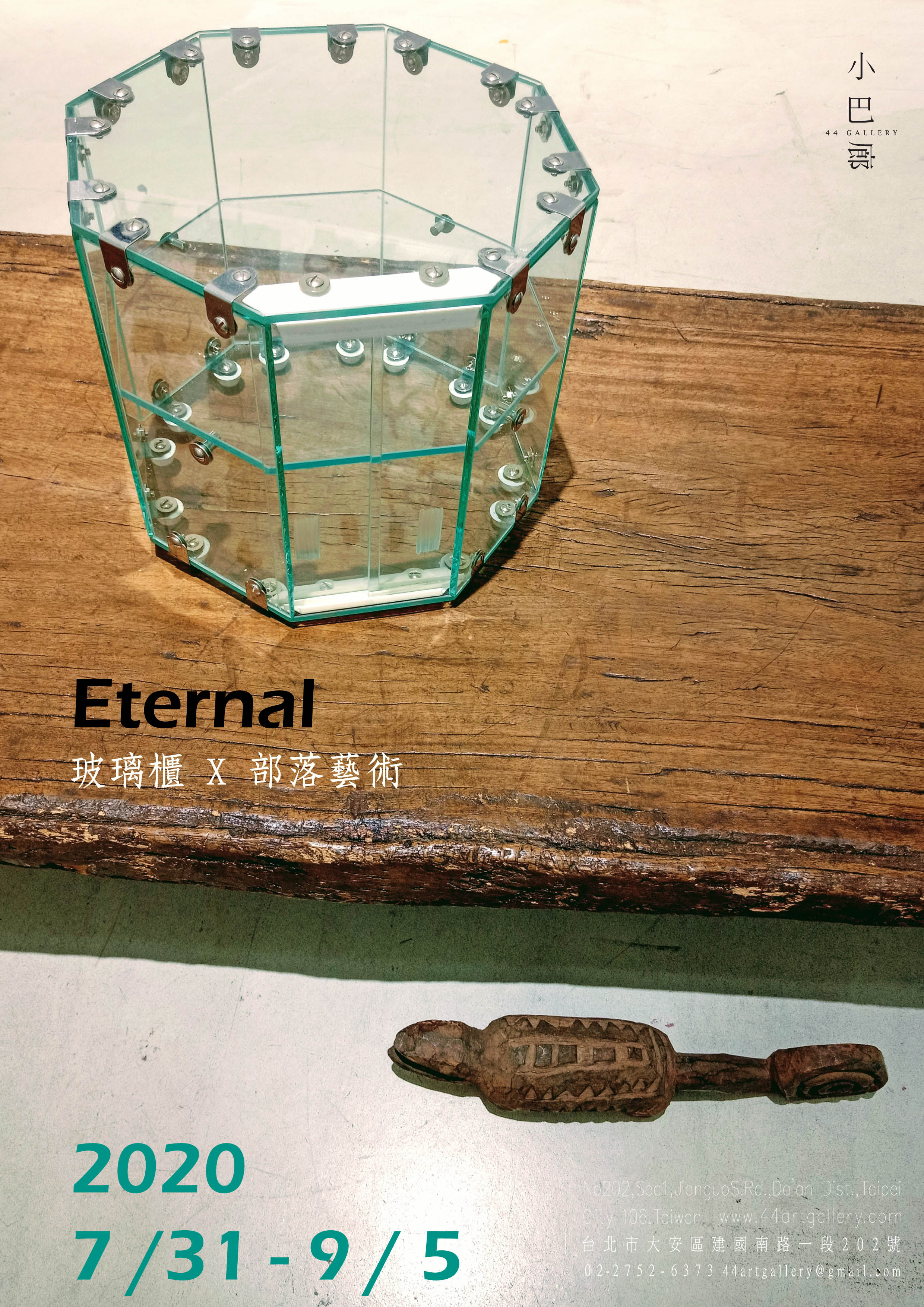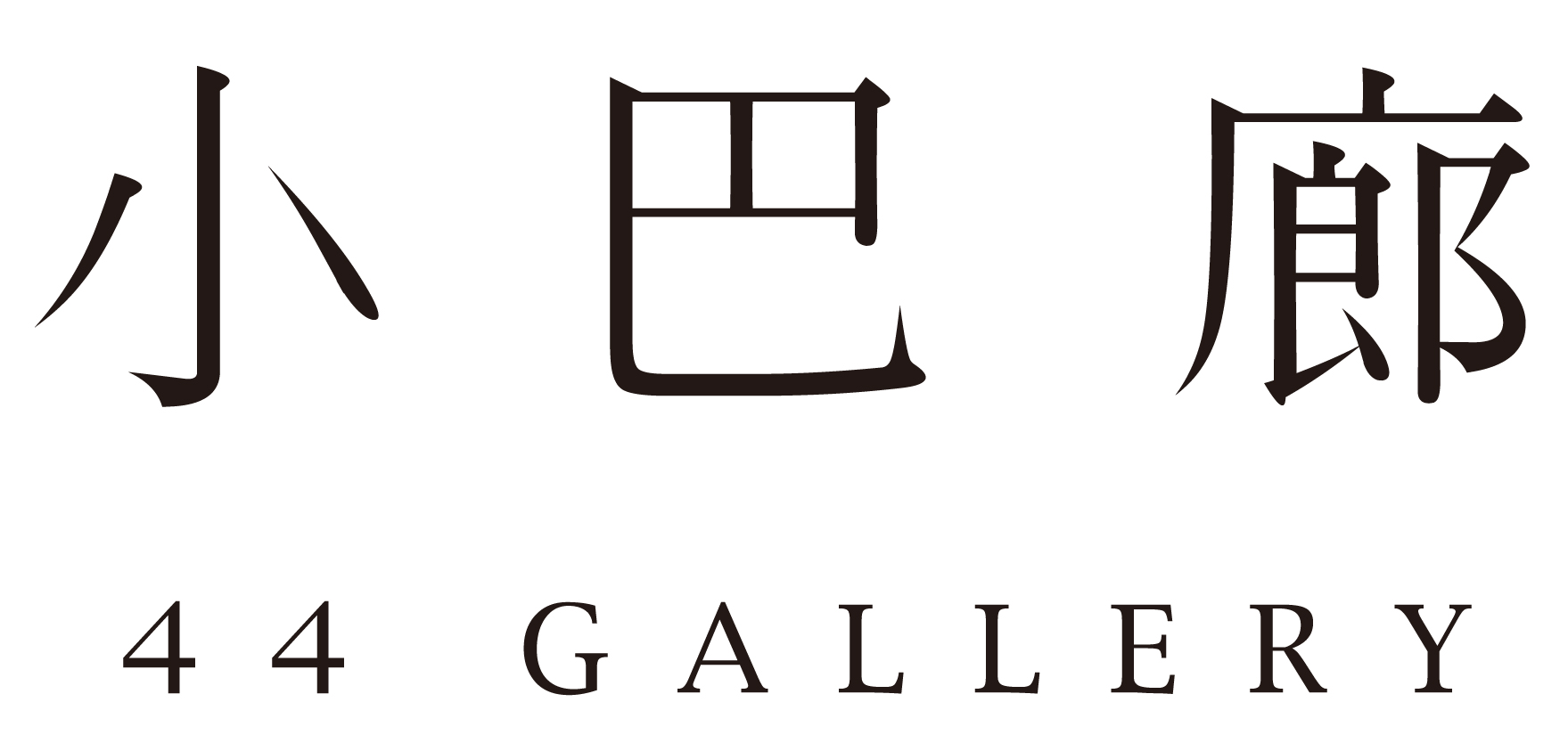『玻璃櫃 X 部落藝術』
2020.07.31 - 09.05
歲月在雕刻上留下了足跡;光芒在玻璃間再現了永恆。
The years have left a footprint on the sculpture;
The light reappears eternity in the glass. --- 小巴廊.44GALLERY
陽光以某個角度穿透玻璃時,會在牆上形成迷你彩虹,1966年科學家牛頓(Isaac Newton, 1643 - 1727) 的「彩虹理論」推論出玻璃產生的七種色光其實一開始就在光裡。這些色光混成一道光線,從太陽直射而來,進入玻璃後才又各自分散...
台灣早期玻璃櫃其經過漫長歲月,來到了空間裡,玻璃彷彿又回當最初的透明,即使表面有幾道摩擦到的痕跡,但卻絲毫不影響它的質感,尤其特殊造型的玻璃櫃 - 梯形 - 規律的多邊形 - 彎曲的幅度形..等,帶有鮮明個性的氣質。具有透明、堅硬、耐磨、光澤、色彩以及不易髒、不透氣、不滲水、耐風化等等,往往透過玻璃的陳列將作品轉換,呈現一種獨特距離與高貴感。 細看玻璃層架的展示玻璃櫃,與不繡鋼的支架元素組合得相當平衡,正因小巧又簡單的設計所以不會太過陳舊,整體外觀到細節都非常講究,營造出現代精緻的氣氛。
以玻璃透光的靈感為這次展覽的輪廓,並從部落藝術的角度切入 -
如同非洲大陸充滿不同民族與美感,在一百多個部落裡每一個獨特的視覺文化,如喀麥隆Duala族以動物形象且具色彩的形式,運用簡單的幾個顏色及線條,來增添面具的趣味性;加彭芳族有高寬的額頭、細長的鼻子以及心形狀的臉,漆上白瓷土的白色人物面具帶有和平的涵義;還有效仿自然界動物如水牛、貓頭鷹、變色龍、羊…等,甚至將動物變形而創造出守護獸,也是極具特色。經過時間、空間的堆積,誘發現代派繪畫和雕塑非洲美學元素。現代派藝術家被非洲雕塑吸引,因為它的成熟架構與不和諧的色調和人物形象的扭曲,這些誇張甚至變形的部落作品往往能夠觸發人們的心靈本質。自世紀之交時,高更,畢卡索,馬諦斯,布朗庫西,莫迪里安尼...等藝術大師,都受到非洲部落藝術的啟發與影響。 畢卡索(Pablo Picasso,1881-1973)的非洲時期,歷時1906年至1909年,畢卡索興趣將目光投向非洲的藝術作品為他的作品激發靈感,而這個興趣是看到馬諦斯(Henri Matisse, 1869-1954)收藏的非洲丹族面具所產生的。因此當時正值時期畢卡索畫中,可以強烈感受作品風格受到非洲雕塑影響,特別是傳統的非洲面具。
非洲部落藝術從19-20世紀至今,透過每一次的展覽及藝術家的表現方式,散發不同的光芒,換句話說也是美麗、知識與權力交織一起的呈現,讓大家更了解在它(部落藝術)催化下展現的不同面貌。因此希望透過 「玻璃櫃 X 非洲部落藝術」主題展 ,將不同的非洲部落作品與玻璃櫃做混搭性的組合,產生出另一種視覺的體驗與對話。
When sunlight penetrates glass at a certain angle, it forms a mini rainbow on the wall. In 1666, scientist Isaac Newton (1643 - 1727) theorized in his "Rainbow Theory" that the seven colors of light produced by glass were actually already present within the light itself. These colors mix into a single beam of light, which comes from the sun, but as it enters the glass, they then scatter.
Taiwan's early glass cabinets, after having passed through many years, have entered the space, with glass seemingly returning to its original transparency. Even though there are a few scratches on the surface, it does not affect its texture. Especially the uniquely shaped glass cabinets — trapezoidal, regular polygons, curved forms — all carry a distinct personality. Glass is transparent, hard, wear-resistant, glossy, colorful, not easily stained, airtight, waterproof, and resistant to weathering. Glass showcases often transform the displayed works, presenting a unique sense of distance and nobility. Looking closely at the glass display cabinets with steel frame elements, they are well balanced. The simple, compact design prevents them from appearing outdated, and the overall appearance down to the details is very refined, creating a modern and elegant atmosphere.
Inspired by the translucence of glass, this exhibition takes a tribal art perspective, much like how Africa is filled with different ethnic groups and aesthetics. Within over a hundred tribes, each tribe has a unique visual culture. For example, the Duala people of Cameroon use animal forms in vibrant colors, employing simple lines and a few colors to enhance the masks' interest. The Fang tribe from Gabon creates white ceramic-faced masks with wide foreheads, long noses, and heart-shaped faces, symbolizing peace. There are also masks that mimic animals in nature, like buffalo, owls, chameleons, and sheep. Some even transform animals to create guardian creatures, which are highly distinctive. Through the accumulation of time and space, modernist painting and sculpture have drawn from African aesthetics. Modernist artists were attracted to African sculpture because of its mature structure, disharmonious tones, and distorted human forms. These exaggerated, sometimes deformed tribal artworks often touch upon the essence of the human spirit. Since the turn of the century, great artists such as Gauguin, Picasso, Matisse, Brancusi, and Modigliani have all been inspired and influenced by African tribal art. Picasso (1881-1973) went through his "African period" from 1906 to 1909, when his interest in African art was sparked by the African Dan masks collected by Matisse. During this period, Picasso's works clearly reflected the influence of African sculpture, especially traditional African masks.
Since the 19th to 20th centuries, African tribal art has continued to radiate its brilliance through every exhibition and the expression of artists. In other words, it presents a blend of beauty, knowledge, and power, allowing people to better understand the diverse forms that emerge through the catalyst of tribal art. Therefore, through the "Glass Cabinet X African Tribal Art" themed exhibition, we aim to combine different African tribal artworks with glass cabinets, creating a unique visual experience and dialogue.



